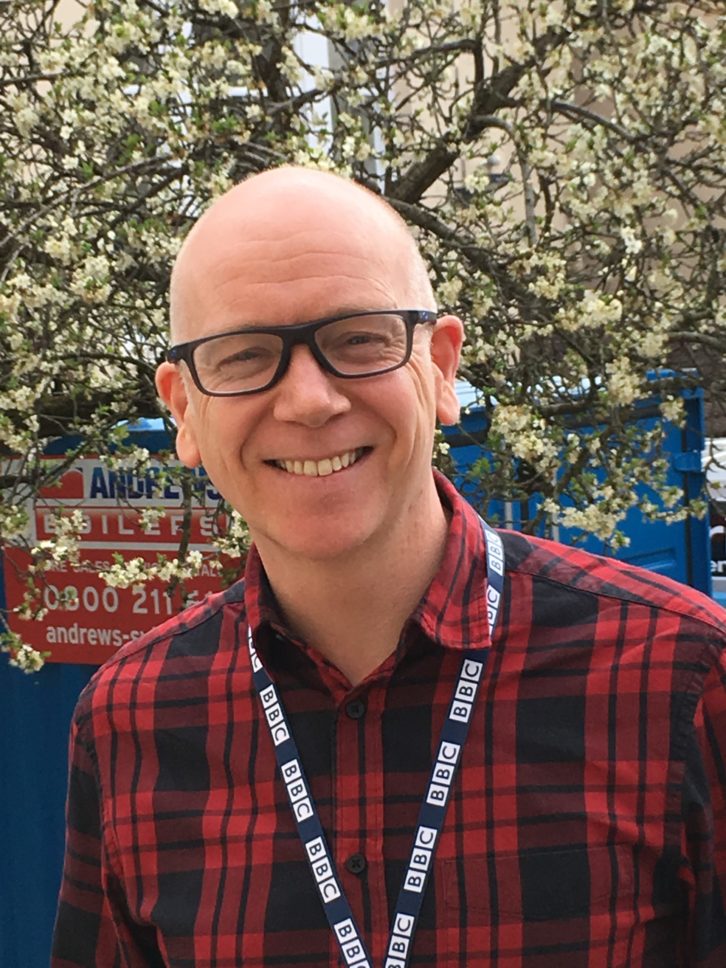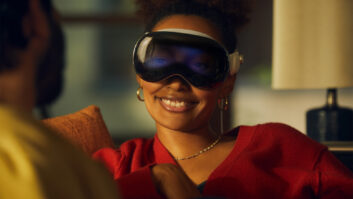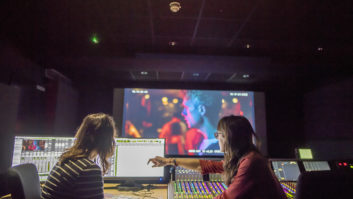TVBEurope’s March issue carried an article about how the perennially popular BBC Two programme Gardeners’ World was produced. Little did we realise that within weeks the whole workflow would be changed to cope with the restrictions imposed due to Covid-19.
“When it became apparent that the lockdown would be in place, our first consideration was for the safety of the team – the presenters, contributors and the crew,” explains Gary Broadhurst, executive producer, BBC Studios. “The channel contacted us and said that it was important to continue producing the programme safely, as it was seen as an important public service in these difficult times.”
He goes on, “We had several conversations with the main presenter, Monty Don, about reducing the number of people in the garden itself. So, we talked to about the possibility of him self-filming – a suggestion to which he was open. He had spent many years watching the team at work – seeing how they finely tune their craft – and was more than willing to give it a go.”
As a result, some basic camera kit, tripod and radio microphone was sent to Don’s garden at Longmeadow. He then spent a couple of days setting up shots and generally experimenting with what could be achieved – including pieces to camera.

“We assessed that footage and felt it would work while we were doing the half hour shows,” states Broadhurst. “And we produced two of the early programmes in that way, and they worked remarkably well. Of course, it is not the same as having a full PSC crew there.”
He reports that audience reaction was extremely positive. In fact, the episode which aired on 24th April received an audience of 2.7 million – which is the highest ranking in a decade.
Longer programmes
However, beyond the first six programmes, the duration was due to be increased to one hour – self-filming was not seen as being viable and so the production team had to act quickly to keep the show on the air.
“As a result, we looked very closely at other programmes that used fixed rigs extensively to produce content. Although we didn’t need the ambition or complexity of shows like 24 hours in A&E, we thought how could we adapt that to an external environment that would be subject to the elements.”
Production then contacted Warwick-based The Complete Camera Company to discover if its solution would work for Gardeners’ World.
Ben Hoffmann. director and co-founder of The Complete Camera Company, takes up the story “We were asked if we could help design a system that meant that BBC Studios could continue making Gardeners’ World during this unprecedented period of effective lockdown. Was it possible to use fixed rig technology in the Longmeadow garden and still produce the show whilst following all the government guidelines around social distancing?”
Keeping distance
Hoffmann goes on, “Social distancing presents an immeasurable number of problems to the working environment, especially during the installation period. From running cables to carrying heavy boxes, it’s only when you start being constantly aware of the two-metre distance rule that you realise how much physical or close contact you have with your colleagues on a daily basis. Using the remote cameras, we feel we have very successfully navigated the complications of social distancing at work. It certainly hasn’t made our job any easier though!!”
He reports that the learning curve was steep. “Gardeners’ World has been on our TVs for over 50 years. We had to learn a lot about how the show was put together and how we could best use our remote equipment to keep the grammar of the programme as close to the original format as we could.”
The Complete Camera Company provided over a metric tonne of technical equipment to make the project work. This included fibre optic transmission systems, file-based recording solutions and vast RF infrastructure to make sure the presenter can be heard wherever he is working in the garden.

Twelve Panasonic UE70 remote cameras are installed each shooting morning. Hoffmann says that Panasonic’s IP data system makes it possible to switch between cameras quickly and seamlessly. “The rest of the engineering back bone is designed in house to work with our systems on site.”
Broadhurst adds, “Those cameras are located in positions that are predetermined by the director and Monty Don. Three cameras are normally used. One is used as the master sync source into which pieces to camera are recorded. A second is used for close up action, while the third is utilised for cutaways.”
Distance directing
Broadhurst goes on to explain that a portacabin is placed in the drive outside of Monty Don’s house – thereby reducing contact between talent and crew. “All the cameras are cabled into the portacabin and the operators do their work from there. It is there that all the recording is carried out. Alongside the radio mic used by the presenter, there are additional microphones positioned at set points in the garden to capture atmosphere.”
Each hour-long show involves two days of shooting. Once the director has established the location of each camera for each sequence, the crew retreat from the garden and Monty Don then comes into that area. As Hoffmann states, “We set up the cameras in the morning and then leave the garden for the rest of the day – we have learnt the hard way that you absolutely have to get it right first time!”
The director sits in a separate portacabin with a quad split screen enabling all camera sources to be viewed. The director uses a walkie-talkie to communicate to the presenter. The series producer, Sharon Fisher is able to view proceedings remotely from her home and the horticultural researcher is able to view the same feed in the same way and also monitor the content and log the shots.
Broadhurst goes on to say that the edit was the next challenge. “The editors are working from their home. However, the technology exists that enables the series producer and the director to view the edit remotely.”
Hoffmann adds, “It’s a genuine honour to have the opportunity to be involved in the show and we are delighted that BBC Studios is still trying to make important television for people as it’s clearly so beneficial to everyone during lockdown. The feedback we have had has been some of the most positive we have ever received – so we are very happy and proud that we could step in and help in some small way.”
Broadhurst agrees, “Everyone is delighted with the way it is working out. It was a huge challenge for the team and a bit of risk making the show in this way – but it has worked and the social media response during the programme was very encouraging. The content is all still there and the look of the show maybe slightly different – but the channel and the Gardeners’ World viewers seem happy.”







